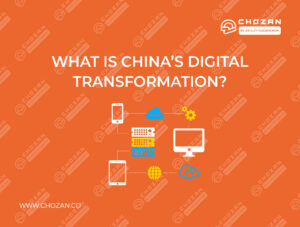WeChat began life as a basic messaging app focused on text messages. Then, it added phone and video calling capabilities. Then, it began to expand into areas that had previously not been associated with simple messaging apps, like pages for photos, linking, liking, commenting and updates. It started to become a social network.
After that, it added functions like taxi hailing and food delivery. E-commerce and fund transfers weren’t far behind. It continuously added functions that its users needed and wanted. For example, the addition of voice messages made it faster and easier to communicate and were a huge hit. They could be recorded while on the go and cut the time spent writing complex Chinese characters onscreen or picking them out of predictive text menus.
Finally, it added virtual red envelopes like the ones given out at Chinese New Year with money in them. Users could send money through the app and millions of people did just that. That’s when the app became ubiquitous.
WeChat Pay meant people could settle restaurant bills and pay for groceries with their phone. Now, people were doing everything from booking and paying for flights to buying a few apples from a tiny market vendor with the app. WeChat has become so big that the word “app” doesn’t adequately describe it.
WeChat continues to add new features and now has over a billion monthly active users worldwide. What started out as an instant messaging app in 2011 has revolutionised life in China.
Types of accounts
WeChat accounts come in two basic flavours. There are personal accounts, which are also known as private accounts. Then there are official accounts, which are also called public accounts.
Personal accounts are for people who want to stay in touch with friends and family, subscribe to official accounts and use the app’s mini-programs and services.
Official accounts are for brands, businesses or high-profile individuals so that they can get followers, communicate or redirect people to their website or e-commerce store.
Official accounts have three types: service accounts, subscription accounts and enterprise accounts (WeChat Work). Enterprise accounts function like workplace intranets, similar to apps like Slack or Monday.com.
Service accounts are for businesses to communicate with customers and have plenty of sales- and service-oriented functions. You can open a WeChat store, create mini-programs and access additional WeChat functions.

Subscription accounts focus more on brand communication. They’re the only type open to individuals as they don’t require a business licence. One to six articles can be posted once a day with this account. They reach users through a subscription account folder with no push notifications so they’re less visible.
How do people use WeChat?
WeChat is popular for both casual and business communication. With its current capabilities, you can send text and voice messages, pictures or video in direct messages or group chats. You can also share posts on your Moments page.
It’s commonly used in workplaces as it facilitates easy file sharing and conference calls. Enterprise accounts can be used to apply for leave, track projects or submit reimbursement forms. You can also scan someone’s WeChat QR code instead of exchanging business cards.
WeChat Pay makes paying easy
WeChat Pay launched in August 2013. It’s linked directly to a user’s bank account and can be used to pay for things on- or offline or to send money to friends by scanning a QR code. This can be done almost everywhere in China, whether you’re in a high street store or at the hawker markets. It has been widely adopted as it doesn’t require expensive terminals that need to be rented or bought – all it requires is two phones. There’s even a “Go Dutch” function that makes splitting dinner bills with friends swift and painless.
This, along with Alipay, is a primary driver of the cashless lifestyle in China. It’s even got to the stage where the average person in China leaves the house without cash on them. And plenty of people there, if given the choice between losing their wallet and losing their phone, fear losing their phone more.
Because WeChat makes most of its revenue from transaction charges and financial products like insurance and small loans, it doesn’t rely on advertising for revenue. Some feel that the result of this is that WeChat’s pay per click advertising is expensive and not highly targeted.
WeChat Pay has expanded beyond China’s borders, along with the country’s outbound tourists, and as of December 2018, it could be used in 49 countries and regions.
Keywords and constant updates
WeChat’s official accounts are similar to a Facebook page. You subscribe and brands, media or individuals post articles, news, product reviews, personal stories and more. You get push notifications from them daily or weekly.
You can also search for content using keywords. This includes articles from official accounts, mini-programs, friends’ posts on their Moments page, text threads and more. People do product research, find news and check on old conversations with their friends – all within WeChat.
This constant and convenient supply of information means that WeChat is the default information source for many people in China as well as the primary touchpoint connecting them to the world.
Mini-programs: apps-within-an-app
In January 2017 Tencent officially released its WeChat mini-program platform. Mini-programs are cloud-based embedded apps within WeChat, making them simplified, streamlined apps-within-an app essentially. Being cloud-based, people didn’t need to install them on their phone. Their introduction meant that people didn’t need a lot of apps crowding their phone. They could just install WeChat, save memory, battery, data and download time, and do almost everything within WeChat. It was a masterful move by Tencent.
Mini-programs for hailing and paying for taxis, paying electricity bills, e-commerce stores, food delivery, playing games and more all work smoothly within the app. You can make hotel reservations without downloading a travel app. There’s even a mini-program that monitors your phone’s battery usage and sends a push notification when it’s low, with directions to the nearest available power banks or charging stations. They’re also perfect for brands that want to connect with customers who are nearby or in their city.
The little app that could
No-one could have predicted in its early days as a simple copycat messaging app that WeChat would ever turn into the all-encompassing behemoth that it is today. It learned from and mimicked its rivals but it didn’t stop there. It also paid very close attention to its users and their needs and wasn’t afraid to go beyond the boundaries of what people thought was possible for an app. It’s now at the stage that it’s a hybrid of Whatsapp, Facebook, Venmo, ApplePay, Amazon, GooglePlay, Skype, Uber, Yelp, Expedia and more.
And the little copycat app that could is now being copied by the apps it once mirrored.
Note: there are two versions of WeChat. In China, users usually refer to the app by its English name, WeChat, even though it has a Chinese name as well, Weixin. The version of the app used in mainland China has different functions and operates on a separate system from the international version.
The international version is also called WeChat but its features are different and much more limited than the version of the app used in China. The international version still operates primarily as a messaging app. This article discusses the version of the app used in mainland China.
This article <A beginner’s guide to WeChat> was originally published in Inside Retail, written by Ashley Galina Dudarenok.
To get deeper insights into Chinese social media marketing and utilizing it to serve your business, join ChoZan, a training and resources platform for Chinese social media marketers.
Please follow our official WeChat account to get more updates about the latest news, feature updates and case studies.

Share this article on your favourite social media
Read more related posts
-
11 Great WeChat Accounts for Chinese Digital Marketing Info
You know that WeChat is a powerful channel to market your business and even sell your products. But what else? Some official WeChat accounts are also great sources of information…
-
How to Sell on WeChat?
With more than 889 million monthly active users and 200 million of them linking their WeChat account to bank cards, there’s no doubt that WeChat is a major player in…
-
WeChat v.s. Line: What Can Line Learn from WeChat?
WeChat and Line are both global leaders among instant messaging apps. Compared with other apps of the same type, like WhatsApp and Facebook Messenger, WeChat and Line are much more…
-
WeChat Advertising: Find Out Which Option Fits You Best
Given its huge number of active users, WeChat has become a battlefield for advertisers to showcase and promote their products. Currently, WeChat offers two major advertising options, namely Moments ads…
-
WeChat Marketing: Pro Tips for the Hottest Social Media in China
Since its official launch in 2011, WeChat has become the leading social media platform in China. According to the Tencent Q3 2016 Financial Report, there are around 846 million monthly…









